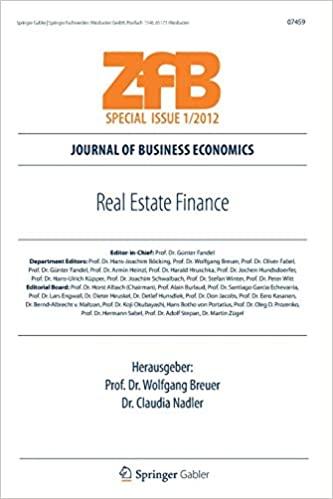Question
Mergers, Acquisitions, and Other Restructuring Activities 8th Edition By Donald DePamphilis Chapter 10 Problem 15 (Practice Problems and Answers) 10.15 PPA You have been asked
Mergers, Acquisitions, and Other Restructuring Activities 8th Edition By Donald DePamphilis
Chapter 10 Problem 15 (Practice Problems and Answers)
10.15 PPA
You have been asked by an investor to value a restaurant. Last year, the restaurant earned pretax operating income of $300,000. Income has grown 45 annually during the last 5 years, and it is expected to continue growing at that rate into the foreseeable future. The annual change in working capital is $20,000, and capital spending for maintenance exceeded depreciation in the prior year by $15,000. Both working capital and the excess of capital spending over depreciation are projected to grow at the same rate as operating income. By introducing modern management methods, you believe the pretax operating growth rate can be increased to 6% beyond the second year and sustained at that rate into the foreseeable future.
The 10-year Treasury bond rate is 5%, the equity risk premium is 5.5%, and the marginal federal, state, and local tax rate is 40%. The beta and debt-to-equity ratios for publicly traded firms in the restaurant industry are 2 and 1.5, respectively. The businesss target debt-to-equity ratio is 1, and its pretax cost of borrowing, based on its recent borrowing activities, is 7%. The business-specific risk premium for firms of this size is estimated to be 6%. The liquidity risk premium is believed to be 15%, relatively low for firms of this type due to the excellent reputation of the restaurant. Since the current chef and the staff are expected to remain when the business is sold, the quality of the restaurant is expected to be maintained. The investor is willing to pay a 10% premium to reflect the value of control.
a. What is free cash flow to the firm in year 1?
b. What is free cash flow to the firm in year 2?
c. What is the firms cost of equity?
d. What is the firms after-tax cost of debt?
e. What is the firms target debt-to-total capital ratio?
f. What is the weighted average cost of capital?
g. What is the business worth?
Step by Step Solution
There are 3 Steps involved in it
Step: 1

Get Instant Access to Expert-Tailored Solutions
See step-by-step solutions with expert insights and AI powered tools for academic success
Step: 2

Step: 3

Ace Your Homework with AI
Get the answers you need in no time with our AI-driven, step-by-step assistance
Get Started


